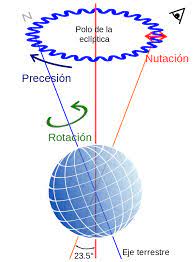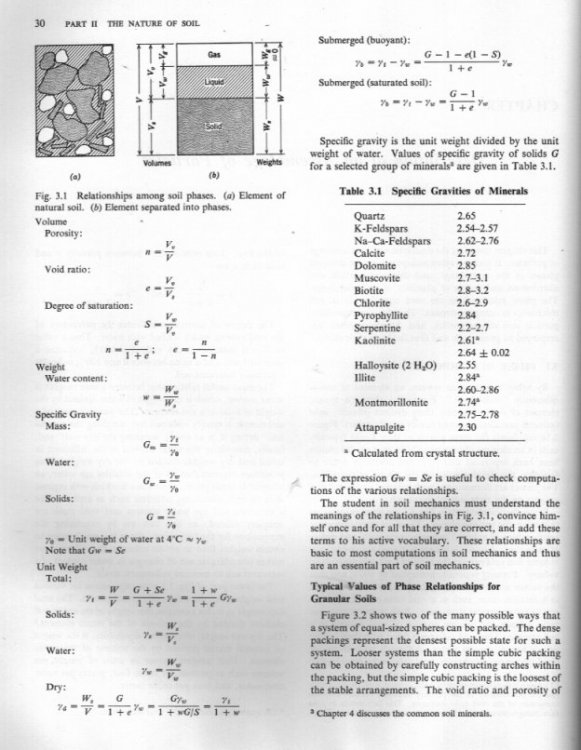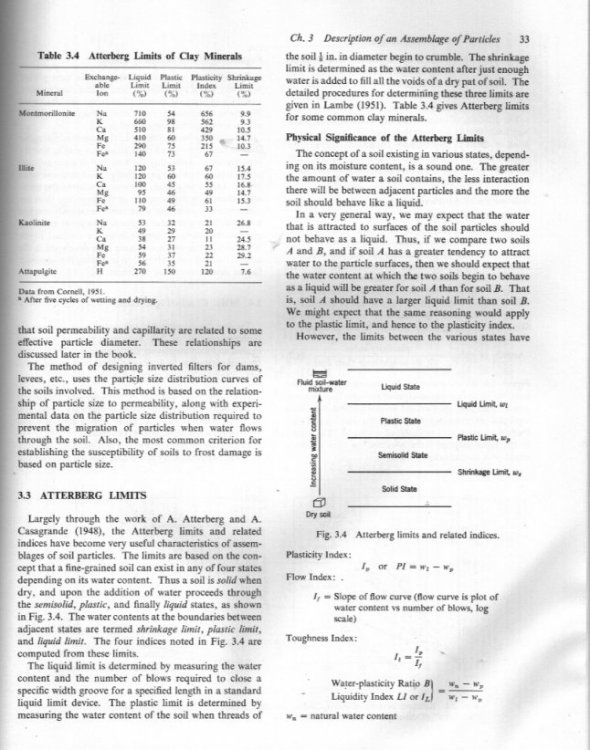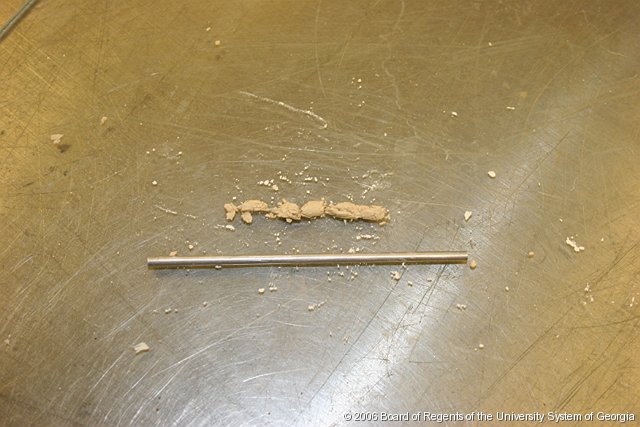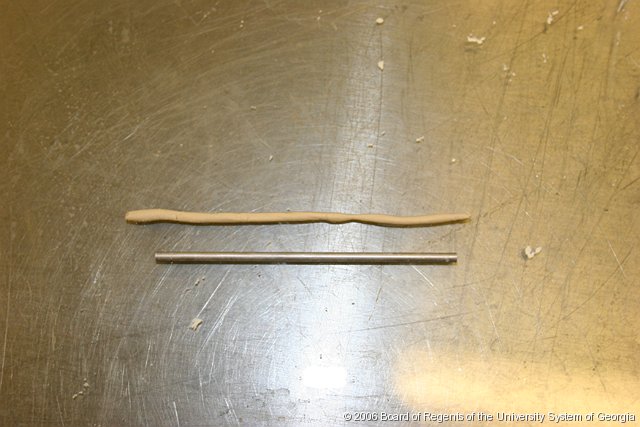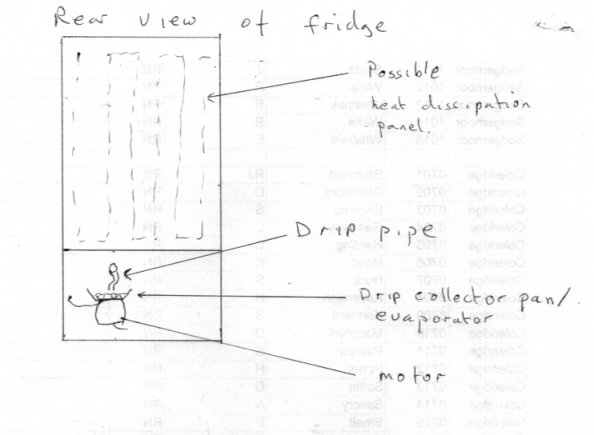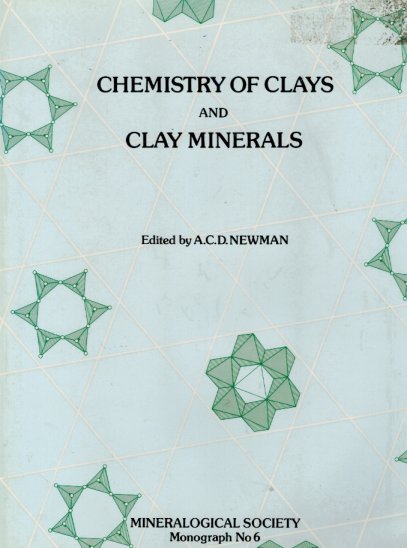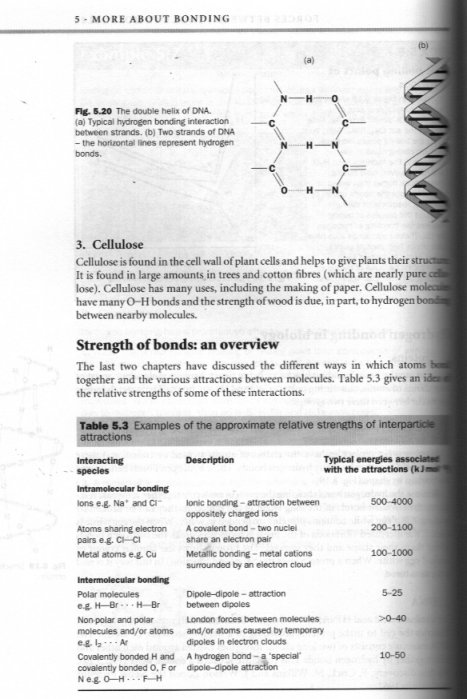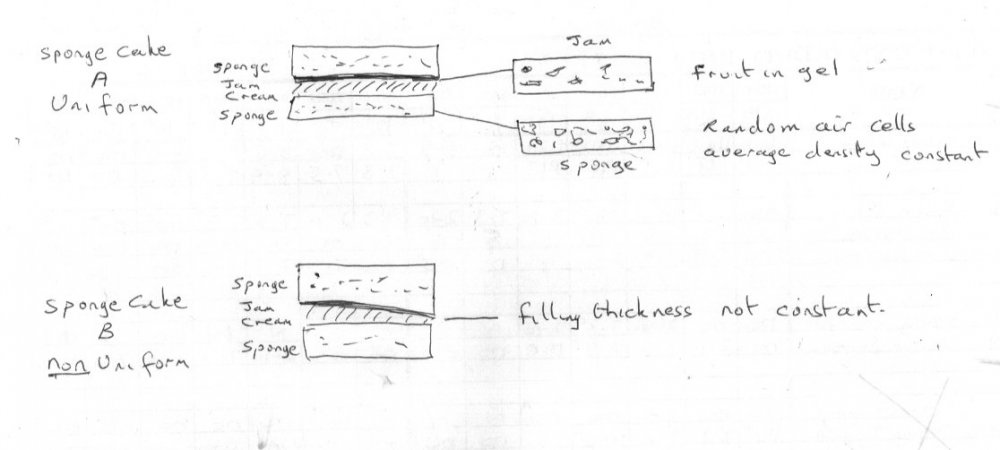-
Posts
18316 -
Joined
-
Last visited
-
Days Won
104
Content Type
Profiles
Forums
Events
Everything posted by studiot
-
You seem not to have picked up my points. The article claims an observed anomaly in the Euler Axes. These are purely mechanical. Gyromagentic ratios and random quantum fluctuations are outside this framework. I noted that both you and the 'prof' mentioned curvature in your discussion. However my point is that curvature has nothing to do with the fundamental sub atomic viewpoint of forces and particles. The relativistic view of gravity is additional Physics and does not have the same effect on the other three conventional members of 'the four fundamental forces'.
-
They are not dimensions in the same sense as length or time. They belong in a virtual space called phase space.
-
You cannot have a CPU "just connected to the power", and not connected to anything else. It is the most basic rule of logic circuitry that all connections (inputs, outputs, control terminals) must be conncted to something. If you do not do so then the conditions at the terminals will be indeterminate (not much use in a logic circuit) and may lead to damaging electrical runaway conditons. In fact a CPU has several power supplies, and the power supply itself which provides these is a sophisticated system that brings the power up gradually in the correct order, and after the already mentioned clock signal and other connections are available. Programs are not loaded into the CPU. They are loaded into a memory array. The CPU has what is known as in instruction set. This is basically a map of the outputs generated by possible combinations of inputs. Not all possibilities are used. When all the power and connections are available the CPU is designed to enter a standard state and load whatever is found/presented at the 'input' terminals by the external circuitry.
-
I am not at all clear what this discussion has to do with a 'fifth fundamental force' ? Firstly I was not aware that three of these forces are considered to be due to curvature of some manifold of any dimension. Secondly what radiative mode ? Again I was not aware that any of the known four forces were able to induce radiative effects in one or more of the other three. For instance in NMR the magentic effect is induced in an external magentic field, not say gravitationa one. Finally I think that the argument of the proposers is that there is some observed observed physical motion of the muons that is not accounted for when all known acting forces are taken into account. This is neither a relativistic nor a quantum effect. They seem to be saying this event is similar to the one which caused Rutherford to say "It is as if you fired a 20 inch shell at a piece of paper and it bounced back and hit you in the eye" or something very similar.
-
There is a difference between nutation and precession. The article describes the effect as a wobble which implies nutation. Wiki offers the following diagram that shows the difference clearly.
-

Does the world need to prepare for an economic crash soon?
studiot replied to jimmydasaint's topic in Politics
+1 -
Watched the BBC article on the News tonight. There they said that the result was abnormal muon rotation found by the Fermilab accelerator near Chicago. They also said the effect had been recently confirmed at CERN. From their description I would have said they meant nutation not rotation.
-
I would like to defer discussion of hydrogen bonding to another thread as it is taking us further and further off topic. The weakest standard bond my copy of Lange's Chemistry Handbook lists is the lithium - Lithium bond at 11 kcal/mol and the strongest hydrogen bond this modern article lists is the formic acid - flouride ion one at 48 kcal/mol (on page 22) https://www.tdx.cat/bitstream/handle/10803/7945/tdhg.pdf?sequence=3Girona But the important point I wanted to make was not the strength if the individual bond but the collective strength of many bonds applied to large molecular aggregates. Yes, most Science texts are expensive, especially working ones. To continue with the mechanical aspect here is some data to review. Don't worry about the forumale, just look at the daigrams and the text and get an idea of how any soil material is made up and behaves as it does mechanically. This will help enormously when we look particularly at clays. I have mentioned the Atterberg limits, but you did not answer my question or the one about vitrification so here are a couple of photos of how geologists and soils engineers test soild for plasticity. I'm sorry I don't have any more time tonight but will come back to it. So here is a website that explains clay from potter's viewpoint , including the subject of my other question - vitrification. https://thepotterywheel.com/types-of-clay-for-pottery/
-
https://www.bbc.co.uk/news/av/science-environment-56662742 From the BBC 1 hour ago.
-

What are rules in the context of knowledge and philosophy?
studiot replied to ALine's topic in General Philosophy
You seem to be asking for the rules of logic. There are many. Did you try typing into the search box the rules of logic ? https://plato.stanford.edu/search/searcher.py?query=rules+of+logic As you found out Philosophy consider all sorts of other rules of other matters as well. The Stanford Encyclopedia is a sort of Wikpedia of Philosophy. I started you near the beginning and hoped you would find your way round it a bit. Like Wikipedia or Google, the more specific your question the better focused your answer. -

What are rules in the context of knowledge and philosophy?
studiot replied to ALine's topic in General Philosophy
https://plato.stanford.edu/contents.html#r -

A question about radiation from a microvawe oven
studiot replied to Titus's topic in Classical Physics
Yes I don't think there are many fridges or freezers on the market without this system +1 You got there before me, but I'll just add my diagram anyway, which shows the back of the device. Most of these have the drip collection and evaporation tray mounted directly on top of the motor to use the small amount of heat the motor generates. The drip tube coming out of the cold compartment is a frequent source of blockage and water collecting inside the device. But the important point here is the word evaporation. I already mentioned that water vapour is invisible in connection with the microwave, which also gives off water vapour despite the Tiitus' protestations to the contrary. Not only this but with typical vapour generation rates for both devices, the vapour will be warm not hot so near impossible to detect by touch. So it is quite reasonable to think that the evaporating water vapour from not only these devices but the rest of the kitchen activities of cooking and washing will disperse and finally condense on that large cold slab formed by the exposed masonry arch. I note from the pictures that there appears to be some scour on the black coating on that region. I also take it that Titus did not blacken the arch at the original refitting, so it was quite possible that an older bodge was concealed under a more complete black coating at that time. If that is the case then no 'cavity rubble' would have been evident at the time of the first refit. Condensation deterioration inside old chimney stacks that have not been used (ie heated) for a long time is a well known phenomenon. The masonry not only provides a massive cold sink but also often as moisture absorbant one to boot. As regards gas televisions, back when the UK converted to natural gas, my brother was heavily involved and had an interesting isuue to resolve. British Gas at the time was legally bound to convert all existing gas devices free of charge. There were some gas powered radios (not televisions as I recall) in the remote North of Scotland that therefore had to be converted. This caused much head scratching at the time. -

A question about radiation from a microvawe oven
studiot replied to Titus's topic in Classical Physics
OK An old farmhouse with a blackened masonry arch (fireplace ?) in the kitchen. What makes you think the cavity (I see no hole) was not always there ? If there was a slight spalled cavity on the stonework surface years ago perhaps they filled it and the filling got covered and disguised by the blackening ? In the days before polyfilla they used to do what was called pargetting - sometimes they literally used pigshit. Anyway a filled surface cavity or just a bit of surface spalling it could have been the hot moisture from the microwave and its predecessors that 'weathered' it off. True water vapour is invisible. -
OK so here is some more Chemistry which I hope will also be useful to Oneworld. As I have mentioned before, homegeny depends upon the scale you are working at. So starting inside the atom things are definitely not homogenous. There is a massive nucleus surrounded by a lot of empty space containing some electrons. Uniformity is represented by saying that every atom of a particular type is the same as every other atom of that type. For example all hydrogen atoms are the same. (for those who know about isotopes I am ignoring them) If we use those atoms to build molecules then again individual molecules are not homegenous since they are often made of different types of atoms. Even those that are combinations of atoms of the same type are not internally homogenous, in much the same way as atoms. So one hydrogen molecule looks much like another. We represent molecules by the 'ball and stick' models shown in exchemist's post, where the balls are individual atoms and the sticks represent the forces that hold them together. And yes, these forces are entirely electrical in origin. For small molecules again all molecules are essentially the same as with atoms and of definite composition, for example methane, ethane propane etc. Individual molecules can be isolated and, in principle at least, you could hand me one molecule of methane. So a large aggregate (number) of them is homogenous in that there would be the same number per cubic centimetre for each cc on your grid. Note that we live in a 3D world so we really need to work in terms of volume not area. This is why I talk of 'bulk clay'. However clays are in a different category. That of super large molecules. Super large molecules happen when a non specific number of atoms join together, unlike methane which always has 4 hydrogens joined to one carbon. A diamond crystal is an example of this. You could not, even in principle, hand me one 'molecule' of diamond. Another example would be a common salt crystal. Clays are like this only their structure is vastly more complex. But they all still can be represented by balls and sticks. As regards the sticks or (chemical) bonds there are several types available. The strength of these bonds are usually measured not in force units but in the energy needed to break them. Here is a table Now my table lists intramolecular bonds, which hold the atoms together in simple molecules and intermolecular bonds which can bind simple molecules such as water to each other hydrogen bonds. And yes the internal bonds in a single simple molecule are stronger than a single hydrogen bond, in general. But in large molecules there can be many many hydrogen bonds holding the parts together. For example in DNA the two strands or chains are held together by literally hundreds of hydrogen bonds this is called 'cross linking' Clays come in sheets rather than thin strands so the effect is even more marked. The subject is of such importance that books such as these have been written just about these clay minerals. Now to return to my original contention. For pottery the scale Chemistry works at is too fine and we should step up into the realms of mechanical properties. Here the clay may be considered homogenous for Pottery purposes since it will have come from a relatively thin piece of clay. I say this because geolically clay may have been laid down in very thick beds, up to thousands of metres thick. When this happns the clay may be stratified because as the particles which form it settle out of the water the larger, heavier ones settle first so will be at the bottom of any strata which mark the start and finish of a period of formation. But pottery type clays will be dug out within a couple of metre depths so will be homogenous. Next post we can examine the mechanical properties that demonstrate this question of homogeny and uniformity. You may have heard of the Atterberg Limits for field testing clays.
-
Yes but you do not need an electron or any other microscope. This question is very complicated, because it depends upon the scale you are working at, especially if you go down to the 'molecular' sizing. I have been digging out some information both for you and for exchemist; I will post it in due course. Remember also that some of the issues lie properly in the domain of soil mechanics as do their answers. One point mentioned by exchemist is that the water holds the bulk clay together. But then he says that creation of pottery dries out the clay. So a good question is, What then holds it together? The answer is vitrification. As a potter are you familiar with this idea ?
-

How to load an embedded Windows to a different motherboard?
studiot replied to Sinan508's topic in Computer Science
Just to add to this, Every sub unit - hard drive, memory cards, graophichs cards, motherboard etc has a unique code number. That is not every type of sub unit but each motherboard etc from each computer has a different code number. When you replace units for repair or upgrade, Windows allows a certain number of replacements. After that you have to obtain authorisation through Microsoft - Theya re quite good if you can convinve them you are repairing a PC and will give you an unlock code. You can often change the motherboard once, particularly with Dell units, but after that you will need this code and some of the other parts need to be still original. -
I'm sure I've got some info in a book somewhere, I tried quickly to look it out but couldn't immediately see it. I will try to dig it out for you.
-
Generally good stuff and a good addition/expansion of my offering, if a tad technical. +1 However beware of the common statement that hydrogen bonds are weaker than 'normal' bonds. Some hydrogen bonds can be as strong or stronger, especially in organic chemistry. Glad it was of some help. To further understand the difference between homogenous and uniform look at my diagrams of two standard sponge cakes. A standard cake has a filling sandwiched between two slabs of sponge. Cake A is uniform but not homogenous because of the layers. Each layer is considered homogenous because it is made of a single substance. So cream or jam is not sponge. If it were homogenous it would be made of the same composition all the way up or through. Cake B is not homogenous as before, but it is not unifrm either as the cream layer varies in thickness. So some slices will have more cream than others, even though they may be the same physical size. OK so on the right I have expanded the scale of the layers. Now I note that the jam is not homogenous because it is amde of large bits of fruit in a gel. The sponge can still be considered homogenous at thiscscale because it is composed of the cake sponge material which contains lots of tiny holes or voids or bubbled where it has risen. However if we take a sensible sized small piece of this sponge each such piece will have the same average density of holes and cake. However at the scale of an individual bubble the cake sponge material is no longer homogenous. This echoes exchemist's comments which go down to an even finer level - The atomic/ molecular level. Hope this helps.
-

sqrt(x)= -1 , no soln. ?
studiot replied to IndianScientist's topic in Linear Algebra and Group Theory
@IndianScientist Here is a site which expains the Fundamental Theorem of Algebra in our context. It is vry easy to follow. https://www.mathsisfun.com/algebra/fundamental-theorem-algebra.html It goes up to include the use of complex numbers for quadratics that do not have a real solution. Any questions ? -

sqrt(x)= -1 , no soln. ?
studiot replied to IndianScientist's topic in Linear Algebra and Group Theory
Cool. So whi8lst in the reals numbers, to use actual examples, we have the numbers +13 and -13 which are additive inverses in the real number system, we have no equivalent in the reals of (13 + 13i) ; (-13 -13i) ; (13 -13i) and (-13 + 13i) So there are four complex numbers, because the 13 can be positive or negative one sign convention and that generates the four different permutations. This is what I meant by saying there are two different conventions involved. The sign of a and b The operations of adding or subtracting -

sqrt(x)= -1 , no soln. ?
studiot replied to IndianScientist's topic in Linear Algebra and Group Theory
Yes that was the question and I hope you mean (-a-ib) 🙂 -

sqrt(x)= -1 , no soln. ?
studiot replied to IndianScientist's topic in Linear Algebra and Group Theory
Thanks but that doesn't answer my question. No one would expect complex numbers to be identical to the reals in every respect or there would be no point having them. Real numbers have only two big divisions, complex numbers have four, in this sense. So clearly a single pair of + and - is insufficient to label all the complex numbers. -
Thermodynamics works perfectly well to address and include radiative heat transfer.
-

Is it possible that round moving have more strong impulse?
studiot replied to altaylar2000's topic in Classical Physics
No. When you are ready to learn some Physics we will explain it to you. -
Thank you but remember my initial response to the OP was to try to tighten it up by pointing out that we have the verb 'to exist' and the noun 'existence', each of which comes with its own implications given by the context. Verbs come with the additional context of tenses, past present and future. What may have existed in the past may not exist in the present or the future etc. My room has a length of 5 metres. It is necessary to provide at least that much space for my room 'to exist' in space. You cannot choose (or limit your discussion to) a particular metre or section of space and use it to discuss the existence of the entire room. Similarly my room has 'been in existence' for 82 years. Again there are implications for choosing a section or shorter duration of time than this to discuss the entire existence of my room. Further again if we are condidered to be travelling through time then there is the question of existence of anything at that section in a way that doesn't occur with space.


